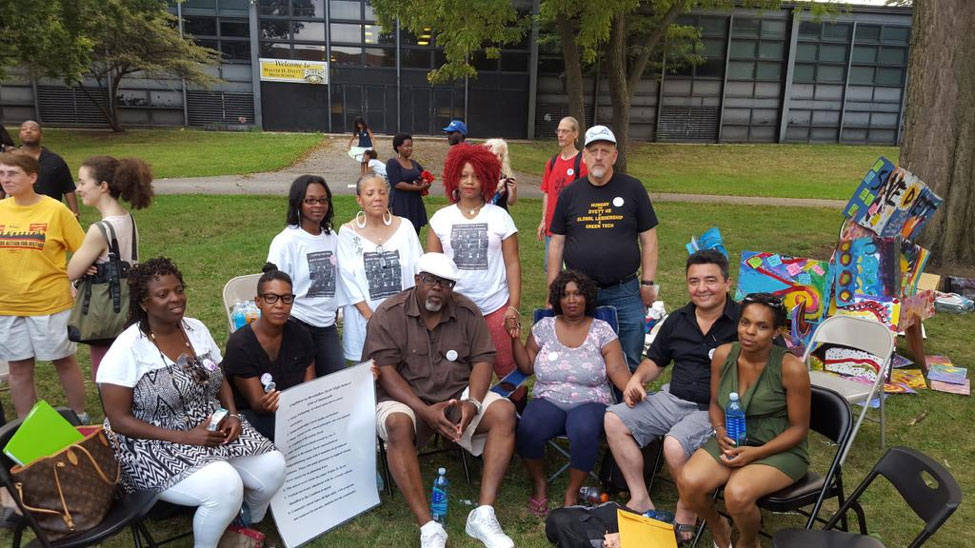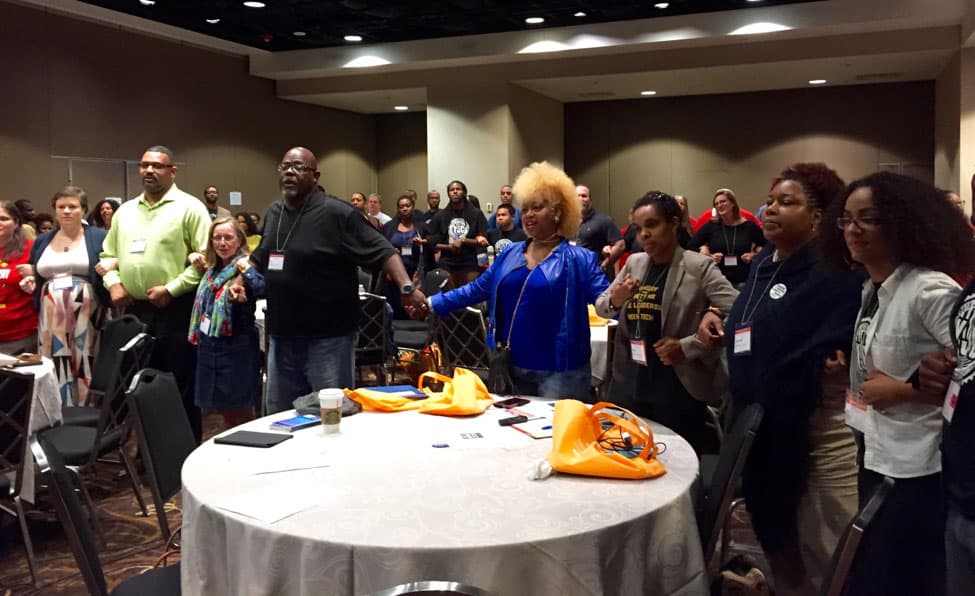Blog
The Dyett Hunger Strike, One Year On

How far would you go to ensure that your child has the right to a great public education? Would you risk your health? One year ago, 12 community members in South East Chicago did just that. After exhausting all other options in attempts to reopen Walter H. Dyett High School, National Director of Journey for Justice Alliance, Jitu Brown, led a hunger strike with 11 other community members that lasted for 34 days. Yes, you read that right, 34 days!
The tale of Dyett’s closing is a common one in Chicago, as it is in many other cities across this country. In 2013, the Chicago Board of Education (appointed by Mayor Rahm Emanuel) announced that it would close 49 public schools in what was the largest mass school closure in United States history. The board’s decision sparked heated criticism, especially the inequity of which schools were being closed: poor, Latino and Black neighborhood schools. The Chicago Board of Education voted to phase out Dyett due to poor academic performance in 2012, and closed the school in June 2015.
Dyett was the last open-enrollment high school in the Bronzeville neighborhood. Since 2013, the Coalition to Revitalize Dyett High School worked on a proposal, which they submitted in April 2015, to reopen the school as “Walter H. Dyett Global Leadership and Green Technology High School”, a community school. Despite the 53-page proposal, Dyett remained closed. In a phone interview last week, Brown reflected on the sense of urgency he and the other strikers felt once they realized that the traditional approaches to reopening the Bronzeville school weren’t working. On August 17th, the hunger strikers set up camp outside the Dyett building as a last resort.
Despite the community commitment to reopen Dyett with a “global leadership and green technology” focus, after 34 days, school officials announced Dyett would reopen in order to end the hunger strike – as an open-enrollment arts based school.
Fast forward to today, one year later, and the hunger strikers’ demands are finally being met. Brown was pleased to report that Dyett will open this fall, with a global leadership and green technology focus that will be tied into the arts focus.
As a result of the hunger strike, Brown has seen changes in more than just Dyett High School. “The fire has been lit”, he says. He sees that the energy is growing around the nation – a higher demand for sustainable community schools, policy makers taking a bigger stance against school closures, a Chicago bill that has passed the House awaiting Senate approval for an elected representative school board, a movement for freedom schools in Detroit, Michigan, Saturday schools opening in Dayton, Ohio, and an overall louder voice and stronger push from parents who want a say in their children’s education. Brown explains that is has been the little victories which have ignited the people, saying, “people fight a lot harder for what they’ve built, rather than what they’re against.”

The #FightForDyett is the fight to improve public education for all children. Black and Brown students, parents, and communities are waging campaigns to protect the fabric of our society, the education of our children.


